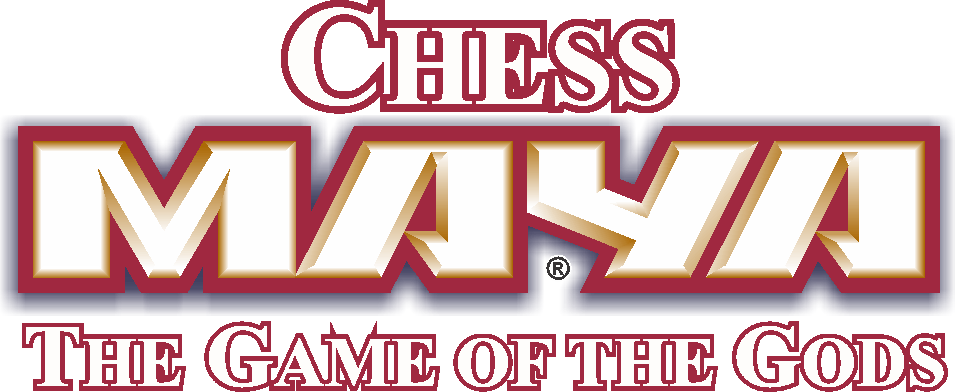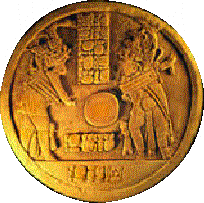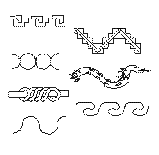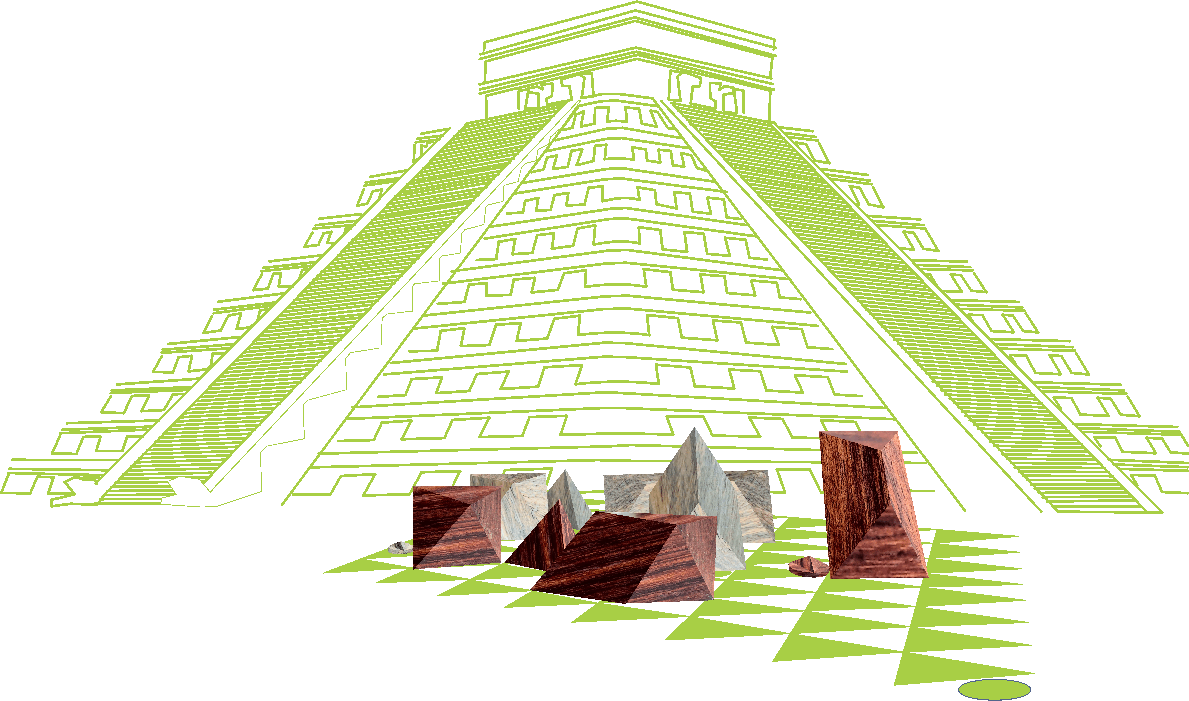|
|
 |
|
 |
 |
 |
 |
 |
|
|
|
|
|
|
|
|
|
|
|
|
|
|
|
|
| |
|
|
Link to the Mayan
Culture
with Maya Chess
"The Game of the Gods"
|
|
|
|
The sacred Ball Game and
The Maya Chess
"The Game of the Gods" |
|
|
|
The Cosmos Cruciform
Mesoamerican |
|
|
|
|
|
|
|
|
|
|
|
|
|
Adapted from
"The Cosmos Cruciform Mesoamerican " by Adrian Snodgrass
 The Popol Vuh,
the Mayan mythical epic, says the land was divided into four
sections corresponding to the four cardinal directions, each
with its own color, their gods and their categories. The
gods of the Maya are characteristically associated with the
four points of the compass.
The Popol Vuh,
the Mayan mythical epic, says the land was divided into four
sections corresponding to the four cardinal directions, each
with its own color, their gods and their categories. The
gods of the Maya are characteristically associated with the
four points of the compass.
Each god is both
unique and possess four expressions, one for each of the
four quarters. In addition, each god is twofold, benevolent
and malevolent.
For example, the
four Chacs, each assigned to one of the addresses, were g ods
of life-giving rain, but also gods of destructive storms and
floods. Itzamná, the god of heaven, sometimes depicted as an
old man with a hooked nose, also appears as a dragon with a
head at each end of its body, one dead and the other alive,
representing the first at the door of heaven in the east the
world where stars are born, and the other, the west gate
where the sun and the stars disappear. ods
of life-giving rain, but also gods of destructive storms and
floods. Itzamná, the god of heaven, sometimes depicted as an
old man with a hooked nose, also appears as a dragon with a
head at each end of its body, one dead and the other alive,
representing the first at the door of heaven in the east the
world where stars are born, and the other, the west gate
where the sun and the stars disappear.
The iconography
of the god Kukulkan, indicating their connection to the four
corners. Holds a torch, representing the central fire, and
four signs of the four elements. It is painted with the
colors of the four elements and sitting in the middle of a
cross-shaped tree in center position, that is manifesting as
a fifth element.
For more
information:
http://www.geocities.com/ |
|
Courtesy of
the magazine
Arqueología Mexicana
 Maya
Chess is a strategy game created from cosmological conception of the
Sacred Ball known as Pok ta Pok. Maya
Chess is a strategy game created from cosmological conception of the
Sacred Ball known as Pok ta Pok.
The ancient Maya
practices the sacred Ball Game for thousands of years, finding
mythical explanation to the origin and movement of the stars, well
as the oppositions of nature.
The ball game had the
character of a rite of passage, the passage from life to life
profane sacred by the acquisition of supernatural powers that
allowed direct communication with the gods.
In the same way that the astral gods of the Popol Vuh reached the
apotheosis through ball game.
The b as-reliefs
and texts associated with the ball game, as well as the location of
the land on ceremonial grounds, reveal that the game symbolized the
idea of cosmic antagonism of opposites essential in Mesoamerican
thought. as-reliefs
and texts associated with the ball game, as well as the location of
the land on ceremonial grounds, reveal that the game symbolized the
idea of cosmic antagonism of opposites essential in Mesoamerican
thought.
It was a rite to
environment, the movement of the stars that create the time as well
as the fertility of nature and life of the cosmos in general.l. |
|
|
The End of the
Fifth Sun
and the Rise of the First Age |
|
|
|
Some scholars of Mesoamerican chronology, placed the beginning
of the Fifth Age on August 12 of the year 3,313 A. C. as the
beginning of the Mayan Great Cycle and interpret the prophecies,
noting that the end of this 5th Sun, took place on December 21
of the year 2012 of Our Era
Welcome to the Light of the First Sun again
Starting on December 21, 2012 beginning gave Prime Sun or First
Age of a new Long Count by 26,625 divided into five age of 5.325
years.
|
|
|
www.mexicon.de
"Mexicon" German magazine with focus on Maya culture
www.pauahtun.org/tools.html
Converter for synchronizing Maya calendar dates with the Julian and Gregorian
calendars
www.mayaarchaeology.org
www.mesoweb.com
Website on Maya with extensive photographic material
jefferson.village.virginia.edu
The documentation project Maya epigraphy "Mayan Epigraphic Database Project"
with a catalog of glyphs
www.sil.org/americas/méxico
Mundo Maya
Magazine specializing in Mayan culture.
www.mayastudies.org
nstitute of Maya Studies in Miami.
|
|
|
Tzacol "The Creator" |
|
|
It was regarded as the
originator supernatural of Energy, Time, Space and Matter.
Energy, Time, Space and Matter.
The Creation was seen as
alien to the Laws of Conservation of Energy and nothing could be created
or destroyed, only transformed

The Maya symbolized
the Number 1
with a point,
depending on your position could increase in value to infinity
|
|
|
|
|
|
|
|
|
| |
|
|
|
|
 |
 Bitol
was Number 3, considered Maya Modeler, same clay modeled in countless
creating molds of increasing complexity, its symbol was the wave meant
Half and Half Evolution and involution, as the Mayans accounted in Bitol
was Number 3, considered Maya Modeler, same clay modeled in countless
creating molds of increasing complexity, its symbol was the wave meant
Half and Half Evolution and involution, as the Mayans accounted in
 his
architectural designs. his
architectural designs.
Polarity Principle
symbolized motor or Cosmos, the positive-negative, the latter is not
necessarily bad, but opposite, as is the severity of weightlessness,
darkness of light, or white from black.
Numerically, the March was
considered a derivation of 1 plus 2.
|
 |
 |
|
|
|
 |
 |
Alom "The
Female Progenitor" |
 |
|
|
|
|
|
 |
 |
Cajalom
"The Male Progenitor" |
 |
|
|
|
|
|
|
|
|
|
|
|
|
|
|
|
©2001-2013
The CEM Team
(Epistemic Community of Mexico) |

Socially Responsible. |
|
|
|
|
|
|
|
|
|
|
|
|
|
|
|
|
|
|
|
|
|
|
|
|
|


